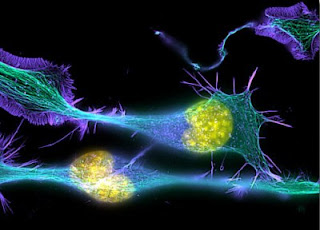Coloured hearing in Williams syndrome

The idea that our genes can affect many of the traits that define us as individuals, including our personality, intelligence, talents and interests is one that some people find hard to accept. That this is the case is very clearly and dramatically demonstrated, however, by a number of genetic conditions, which have characteristic profiles of psychological traits. Genetic effects include influences on perception, sometimes quite profound, and other times remarkably selective. A recent study suggests that differences in perception in two conditions, synaesthesia and Williams syndrome, may share some unexpected similarities. Williams syndrome is a genomic disorder caused by deletion of a specific segment of chromosome 7. Due to the presence of a number of repeated sequences, this region is prone to errors during replication that can result in deletion of the intervening stretch of the chromosome, which contains approximately 28 genes. The disorder is characterised by typical facia...


